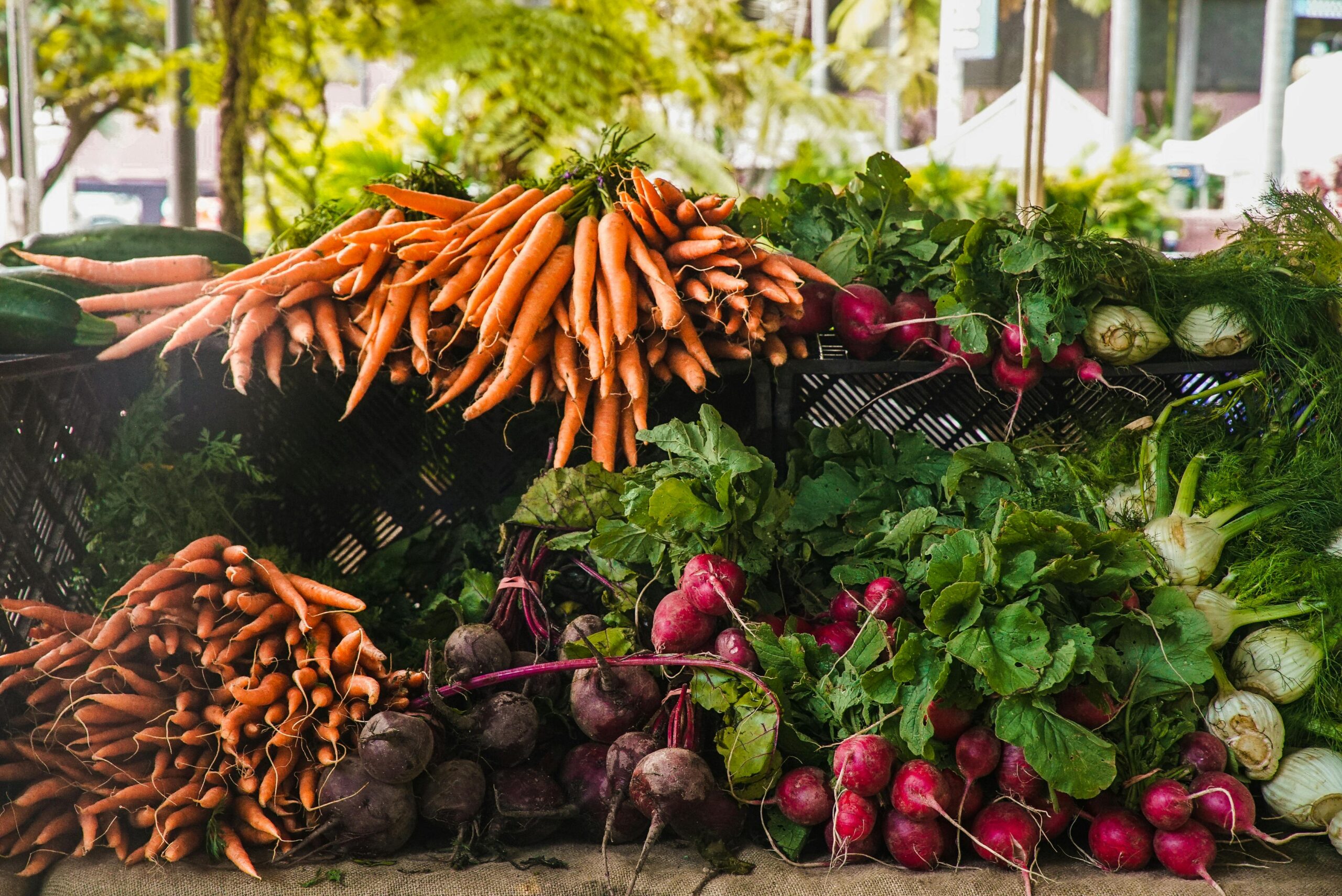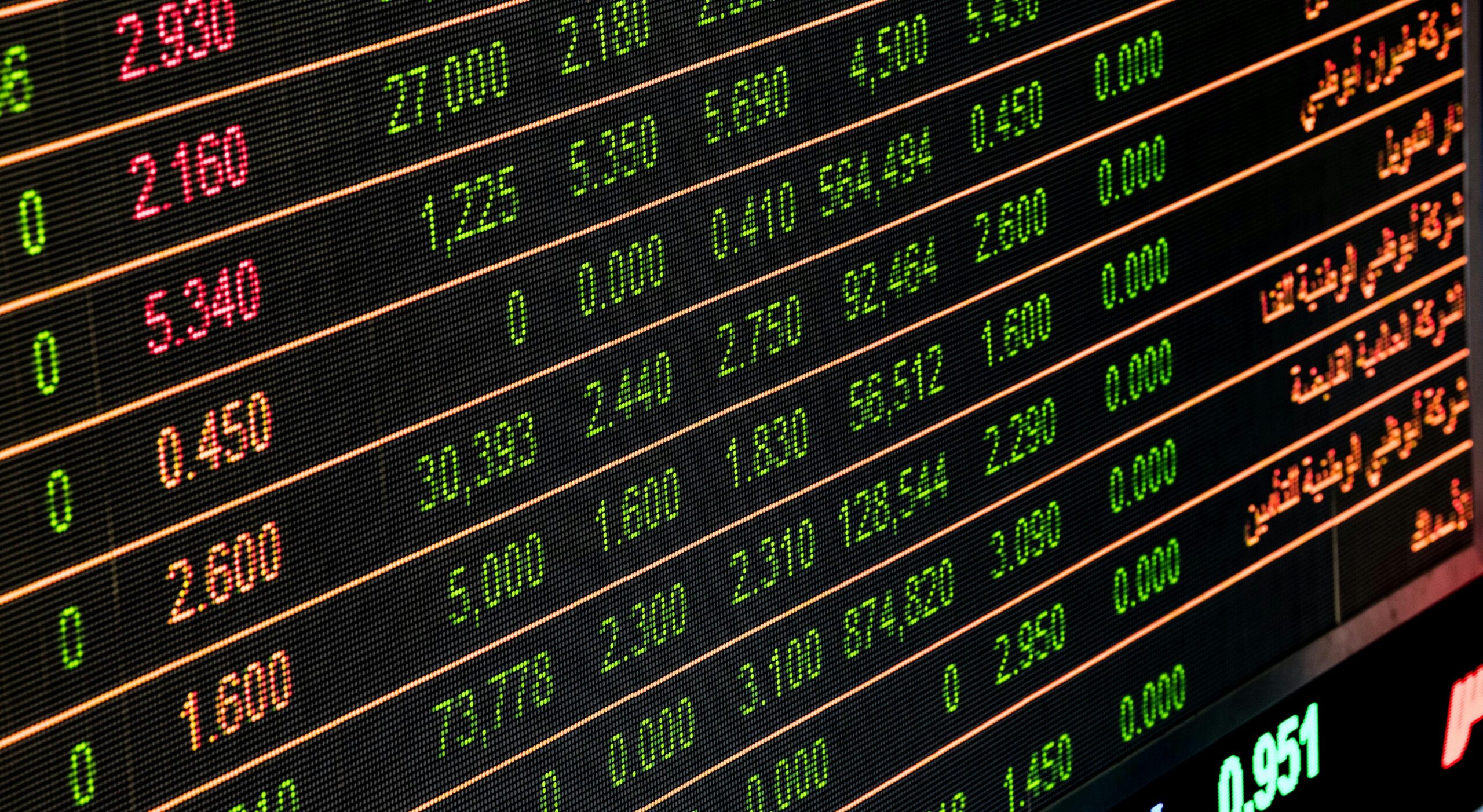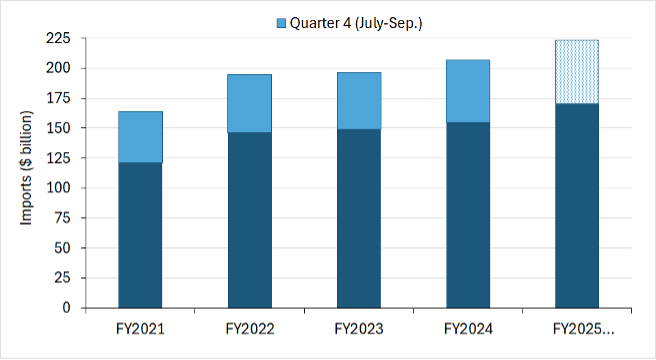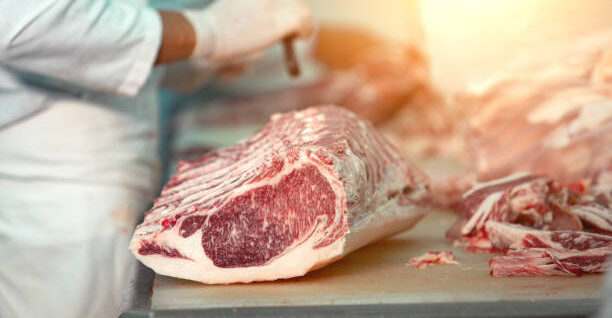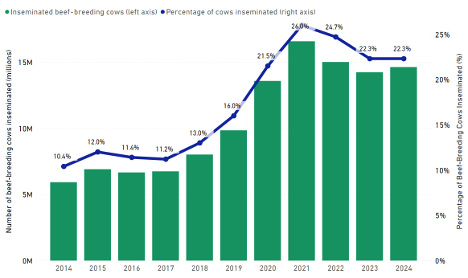The U.S. fruit and vegetable (F&V) industry is a cornerstone of American agriculture, but it faces continuing challenges from imports and rising production costs. According to USDA, 2025 cash receipts for all crops are projected at $236.6 billion, a 2.5 percent decline from 2024. While fruit and nut cash receipts are expected to rise slightly, those of vegetables are set to fall. Despite strong consumer demand for fresh produce, its perishable nature and exposure to international competition leave U.S. growers in a vulnerable position. Two pressures dominate: a widening trade deficit fueled by imports, and rising input costs, especially labor.
For decades, U.S. agriculture ran a trade surplus. That changed in 2019, when imports began outpacing exports (figure 1). By 2021, the overall agricultural trade balance turned negative and has stayed there since. Fruits and vegetables lie at the heart of this shift. In 2024, horticultural imports (excluding nuts, alcoholic beverages, cut flowers, and essential oils) totaled $49.8 billion—about one-quarter of all agricultural imports. Increasingly, these imports arrive during U.S. harvest windows, driving down domestic prices at critical times. Exports, by contrast, were only $15.9 billion. Mexico dominates U.S. fresh produce imports, particularly vegetables, while Canada, Peru, and Chile are major fruit suppliers. Canada, Peru, and Guatemala also stand out in vegetables. These countries benefit from lower labor costs, government subsidies, favorable climates, and large seasonal labor pools. The result is a structural disadvantage for U.S. growers, who face high costs while competing against cheaper imports.
Even as imports increase, U.S. growers must contend with rising production costs. Specialty crops like fruits and vegetables are among the most labor-intensive in agriculture. Unlike corn or soybeans, they cannot be fully mechanized and require hand-harvesting, pruning, and close crop management. According to USDA, production expenses across the farm sector are projected to reach $467 billion in 2025, up 2.6 percent from 2024 and more than 36 percent higher than in 2018. Labor is the single largest cost driver for F&V producers. Since most workers are hired through the H-2A guest worker program, rising wage rates – mandated through the Adverse Effect Wage Rate – have significantly increased costs. Growers also face higher fees, stricter compliance rules, and added administrative burdens tied to H-2A. Surveys confirm these challenges: in 2024, 44 percent of growers cited H-2A labor costs as their top concern, while 54 percent reported labor shortages—up sharply from 41 percent in 2019.
The U.S. F&V industry is squeezed between cheaper imports and rising domestic costs. Labor shortages and wage pressures magnify these risks, leaving growers uncertain about future profitability. Given the importance of specialty crops to the agricultural economy, strategies to strengthen resilience are urgent. These may include risk management tools, expanded research into labor-saving technologies, and policies that level the competitive playing field. Without such measures, U.S. growers will remain caught between global market forces and domestic labor constraints.
Figure 1. Trade Balance for U.S Agriculture and the F&V Industry

Munisamy, Gopinath, and Dixit Poduel. “Rising Imports and Soaring Costs: Dual Pressures Squeeze U.S. Fresh Produce Growers.” Southern Ag Today 5(38.4). September 18, 2025. Permalink
